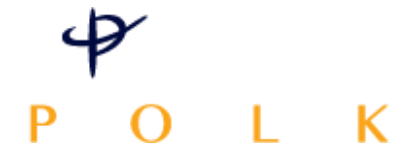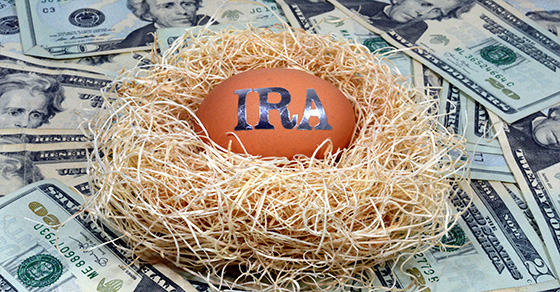Employees: Don’t forget about your FSA funds
- ByPolk & Associates
- Nov, 25, 2020
- All News & Information
- Comments Off on Employees: Don’t forget about your FSA funds
Many employees save taxes by placing funds in their employer’s health or dependent care flexible spending arrangements (FSAs). It’s a good time to review 2020 expenditures and project amounts to be set aside for 2021. A pre-tax contribution of $2,750 to a health FSA is permitted in 2020. To avoid forfeiture of your health FSA funds because of a “use-it-or-lose-it” rule, you must make eligible medical expenditures by the last day of the plan year (Dec. 31 for a calendar year plan), unless the plan allows an optional grace period. Like health FSAs, dependent care FSAs are also generally subject to a use-it-or-lose-it rule. Other rules and exceptions may apply. Contact us with any questions.
The importance of S corporation basis and distribution elections
- ByPolk & Associates
- Nov, 25, 2020
- All News & Information
- Comments Off on The importance of S corporation basis and distribution elections
S corporations may provide tax advantages over C corporations. This can be true if you expect the business to incur losses because C corp. shareholders generally get no tax benefit from losses. Conversely, S corp. shareholders can deduct their share of these losses on personal tax returns to the extent of their basis in the stock and any loans they make to the entity. So the ability to use losses that pass through from an S corp. depends on your basis in the corporation’s stock and debt. Be aware that there are some elections available to an S corp. or its shareholders that can affect the basis adjustments caused by distributions and other events. Contact us if you’d like more information.
Health Savings Accounts for your small business
- ByPolk & Associates
- Nov, 25, 2020
- All News & Information
- Comments Off on Health Savings Accounts for your small business
Business owners know employee health care benefits are expensive. Therefore, your business may want to provide some of these benefits through an employer-sponsored Health Savings Account (HSA). For eligible individuals, HSAs are a tax-advantaged way to set aside funds (or have their employers do so) to meet future medical needs. An eligible employee must be covered by a “high deductible health plan.” For 2020 and 2021, a high deductible health plan has an annual deductible of at least $1,400 for self-only coverage, or $2,800 for family coverage. For 2020, an individual can contribute $3,550 in ($7,100 for a family) to an HSA. This is increasing to $3,600 and $7,200, respectively, for 2021.
Taking distributions from a traditional IRA
- ByPolk & Associates
- Nov, 25, 2020
- All News & Information
- Comments Off on Taking distributions from a traditional IRA
If you’ve built a nice nest egg in a traditional IRA (including a SEP or SIMPLE-IRA), it’s critical that you plan carefully for withdrawals from these tax-deferred retirement vehicles. For example, if you need to take money out of a traditional IRA before age 59½, distributions will generally be taxed and may also be subject to a 10% penalty. However, there are several ways to avoid the penalty (but not the regular income tax). Once you attain age 72, traditional IRA withdrawals must generally begin or you’ll be penalized. However, the CARES Act suspended the required minimum distribution rules for 2020. Contact us with traditional IRA questions and to analyze your retirement planning.
Putting the finishing touches on next year’s budget
- ByPolk & Associates
- Nov, 25, 2020
- All News & Information
- Comments Off on Putting the finishing touches on next year’s budget
By now, some businesses have completed their 2021 budgets while others are still crunching the numbers. As you put the finishing touches on your company’s spending plan for next year, be sure you’ve covered the finer points of the process. First, to position your budget for optimal success, ensure everyone on the leadership team has bought into common forecasting goals. Second, account for “variances” that could undermine your efforts. These include competitive, compliance and internal risks. Above all, save strategic planning initiatives for another day. Stay focused on the goal of creating a feasible, flexible budget. We can review your budgeting process and recommend improvements.
Hit the target with your email marketing
- ByPolk & Associates
- Nov, 13, 2020
- All News & Information
- Comments Off on Hit the target with your email marketing
Social media marketing tends to get plenty of attention these days, but email remains a viable medium for getting out the message of your business. And the COVID-19 pandemic is driving online shopping and sales. There are some basic ways to hit the target. Start with a catchy subject line. Next, write a headline that differs from the subject line but drives readers’ interest. Keep the body short and simple; tell customers why they should buy. Consider visual content, such as images and GIFs, but beware of some email systems’ limitations. Close with a call to action that includes a deadline and directions on what to do. Want help measuring and maximizing your marketing dollars? Contact us.
How Series EE savings bonds are taxed
- ByPolk & Associates
- Nov, 13, 2020
- All News & Information
- Comments Off on How Series EE savings bonds are taxed
Many people have Series EE savings bonds that were purchased many years ago. Perhaps they were given as gifts or maybe you bought them yourself and filed them away. You may wonder: How is the interest taxed? EE bonds don’t pay interest currently. Instead, accrued interest is reflected in their redemption value. (But owners can elect to have interest taxed annually.) EE bond interest isn’t subject to state income tax. And using the money for higher education may keep you from paying federal income tax on it. Unfortunately, the law doesn’t allow for the tax-free buildup of interest to continue forever. When the bonds reach final maturity, they stop earning interest. Contact us with questions.
Do you want to withdraw cash from your closely held corporation at a low tax cost?
- ByPolk & Associates
- Nov, 13, 2020
- All News & Information
- Comments Off on Do you want to withdraw cash from your closely held corporation at a low tax cost?
Owners of closely held corporations often want to withdraw money from their businesses at a low tax cost. The simplest way is to distribute cash as a dividend. However, a dividend distribution isn’t tax-efficient, since it’s taxable to you to the extent of your corporation’s “earnings and profits.” And it’s not deductible by the corporation. But there are alternatives that may allow you to withdraw cash and avoid dividend treatment. For example, you might be able to receive capital repayments, or obtain reasonable compensation for you, as well as certain fringe benefits. Contact us if you’d like to discuss these or other ideas to tax-efficiently get cash out of your corporation.
Should you go phishing with your employees?
- ByPolk & Associates
- Nov, 13, 2020
- All News & Information
- Comments Off on Should you go phishing with your employees?
As a business owner, you’re probably aware of the danger of “phishing.” This is when a fraudster sends a phony communication (usually an email) that appears to be from a reputable source but is really an attempt to get recipients to reveal sensitive information or expose their computers to malware. Ever considered trying it yourself? Many companies are intentionally sending fake emails to employees to determine how many will fall for the scams. But it’s hardly a risk-free strategy. You’ll need to budget for the costs of buying, installing and maintaining phishing simulation software. And you’ll have to consider the ethical implications of deceiving your employees. Contact us for more info.
Disability income: How is it taxed?
- ByPolk & Associates
- Nov, 13, 2020
- All News & Information
- Comments Off on Disability income: How is it taxed?
You may wonder if and how disability income is taxed. It depends on who paid for the benefit. If the income is paid directly to you by an employer, it’s taxable to you as ordinary salary would be. (Taxable benefits are also subject to federal tax withholding, although they may not be subject to Social Security tax.) Sometimes, payments aren’t made by an employer but by an insurance company under a policy providing disability coverage or other insurance. In this case, the tax treatment depends on who paid for the coverage. If an employer paid, the income is taxed to you just as if paid directly to you by the employer. But if it’s a policy you paid for, the payments you receive aren’t taxable.










